Toshikazu Kayano: The Playful Maniac at ASICS
|Shane Anderson
At the Institute of Sports Science (ISS) in Kobe, ASICS tests every conceivable aspect of a shoe. Athletes are invited to paste sensors to their bodies so researchers can study how they move, a robotic arm walks or runs in place for hours on end, and shoes are subjected to various weather conditions in off-limits rooms. The atmosphere at the ISS borders on obsessive: every stitch and pocket of GEL™ technology has been placed according to data and the customized models are made by hand. Such dedication to perfection is not only limited to ASICS’s performance shoes, it also extends to the SportStyle models whose fusion of fashion and function has carried ASICS to new heights, both economically and culturally.
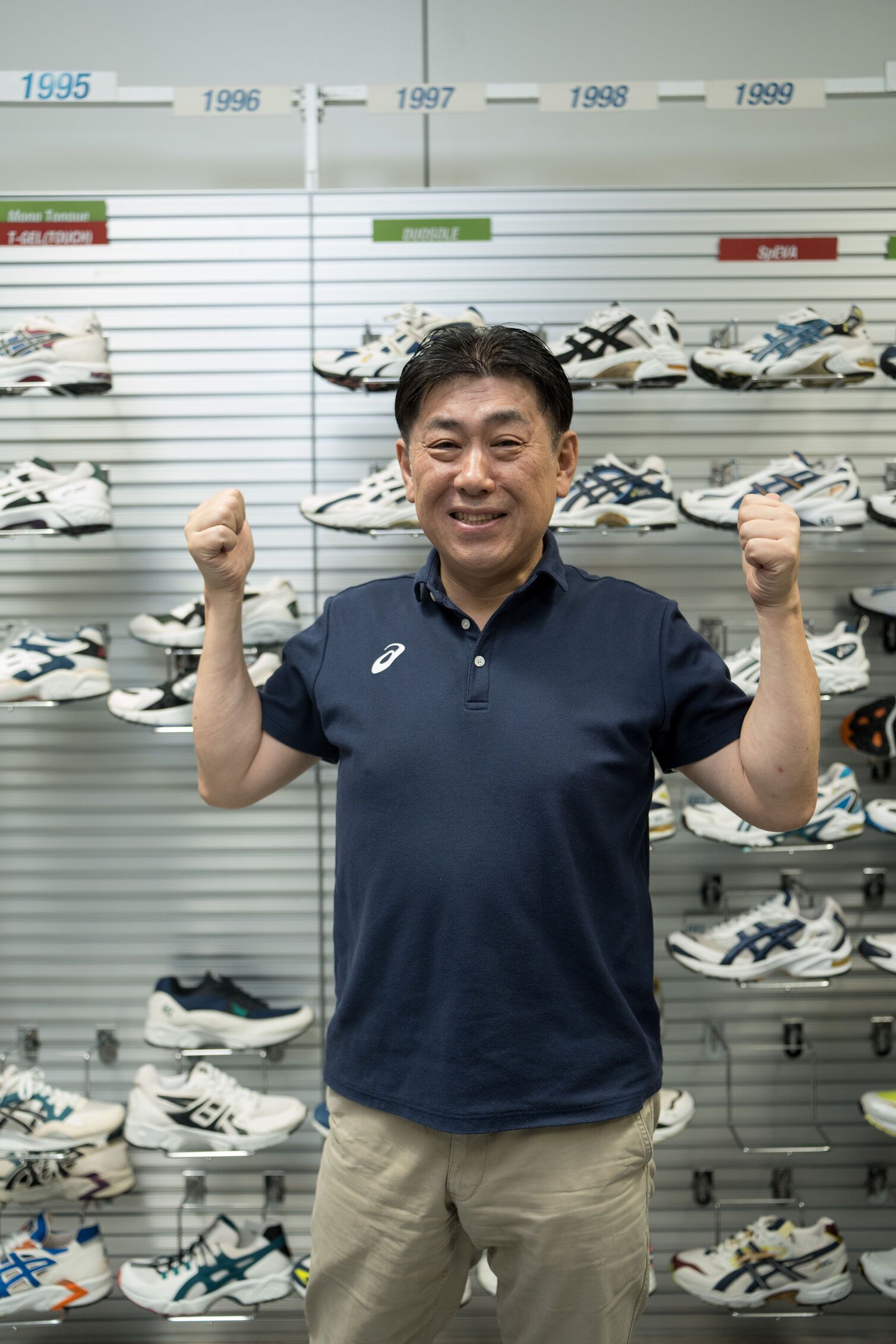
Though SportStyle was launched in 2019, it is not without precedent. ASICS designer Toshikazu Kayano began bringing together fashion in sports in the early 2000s. For him, shoes are not just about performance. They’re about “emotions,” a word he constantly uses. Here, Shane Anderson spoke to the legendary designer about otaku culture, the influence of stag beetles and human organs, and why he’s sad that he didn’t design the GEL-KAYANO 14.

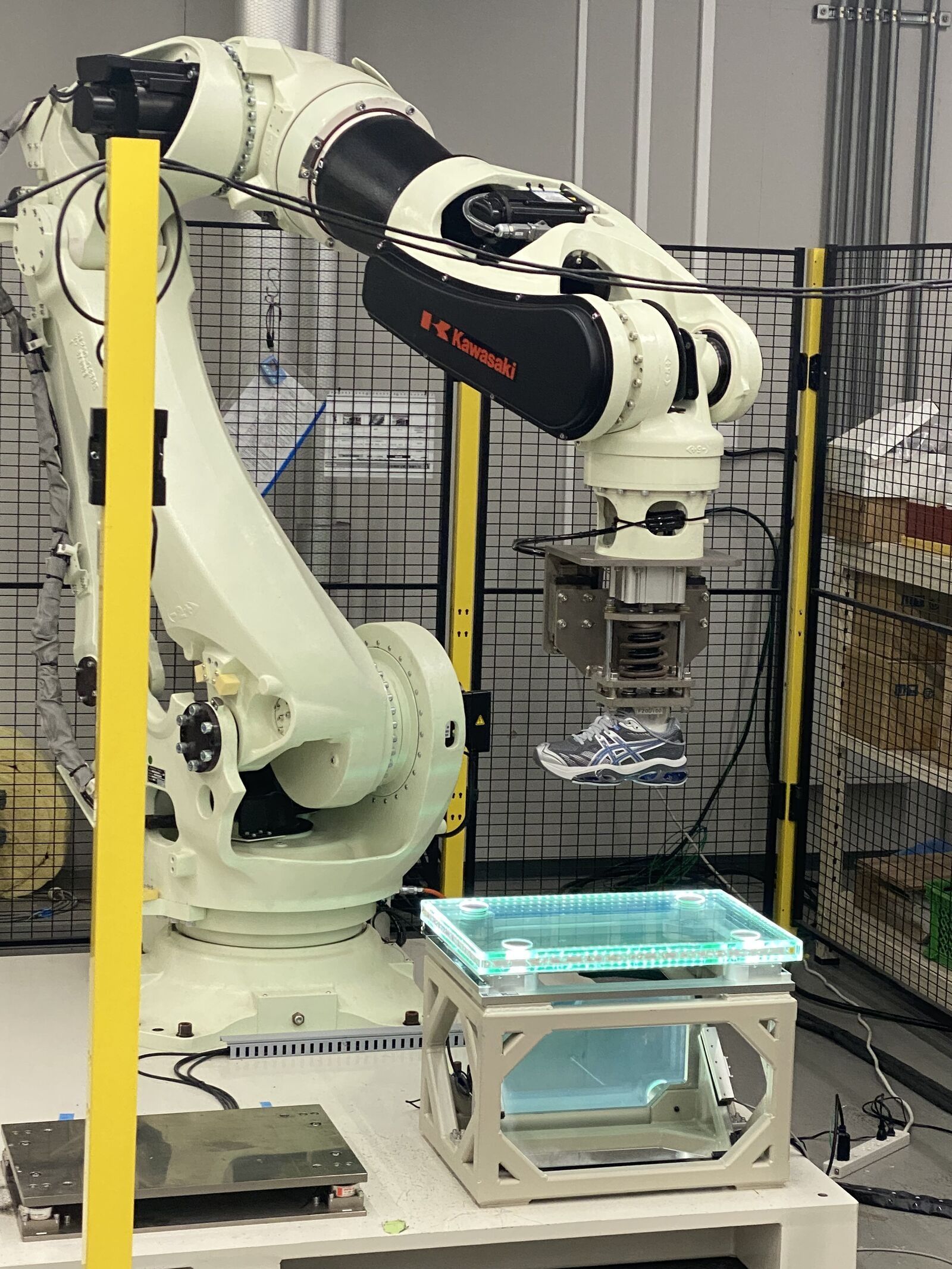
ISS in Kobe. Photos: Shane Anderson
Shane Anderson: From my understanding, you didn’t intend to become a shoe designer. What was your main passion instead?
Toshikazu Kayano: Since I was a child, I’ve been surrounded by Japanese subculture. Things like anime, manga, cars, and electronics. In other words, I was really into otaku culture. This environment influenced my creativity. But in Japan, we’re forced to leave these things when we become adults—otaku culture is considered to be childish. However, I still learn a lot from this kind of creativity and I like it very much. I still take inspiration from otaku culture.
SA: What does otaku culture mean to you?
TK: That can be summed up in two words. The first is maniac. The second is playful.
SA: That’ll be the title of your biography. Kayano-san: The Playful Maniac.
TK: In all seriousness, otaku culture is intrinsic to Japanese culture. It’s a byproduct of Japanese society and made by Japanese people. And that’s something I really hold dear to me. And I guess by way of ASICS, this is something I can give to the world.
SA: What did you want to do instead of designing shoes?
TK: I wasn’t interested in designing shoes at all. I wanted to be a car or electronics designer.
SA: What changed?
TK: At university, I majored in industrial design but afterwards, I started looking for a job and applied to different car and electronics companies. But I never landed a job in that field. Then I thought that maybe ASICS would be a good place to work. When I was growing up in the countryside, there was an ASICS factory nearby and I would pass it every day on my way to school. I always felt very sentimental about it and then I was lucky enough to become a part of the ASICS head office.
SA: It’s somewhat incredible to me that one of the most legendary shoe designers of our time only became a shoe designer because he didn’t do what he wanted to do. Was this just dumb luck or fate? Surely you must have been interested in shoes.
TK: It wasn’t completely random that I applied to ASICS. They were doing other things at the time and I thought I could maybe work in the bicycle department. In fact, that’s where I wanted to work but they said that I should be proud to design shoes, since they’re the pride and joy of ASICS. I accepted this position and just hoped that I could do some interesting work.

The Basketball Court inside the Brutalist ISS
SA: When was this?
TK: 1987.
SA: How many years did you design shoes before the Kayano line was developed?
TK: A little over five. At first, I was responsible for basketball and wrestling shoes for the US market as well as tennis and handball shoes for the European market. At the same time, I was developing running shoes like the GEL-RUNNER, GEL-RESPECT, GEL-TRENDY, and GEL-SAGA before the GEL-KAYANO series. After that, I was also responsible for popular running shoes such as GEL-NIMBUS, GT-2000, and GEL-CUMULUS, as well as shoes for cricket, track and field, soccer, baseball, field hockey, and many others. I was in charge of design and development for a total of 21 years.
SA: How many years did you design the GEL-KAYANO?
TK: From 1 to 13. I didn’t design GEL-KAYANO 14, which is very popular in the world. But I was involved in design strategy for 15 to 18.
SA: How does it feel that the GEL-KAYANO 14 is so popular?
TK: Good—but also a little sad.
[Laughter.]
SA: I find it interesting that an in-house designer’s name has been on a shoe line for so long. Normally, the designer’s work and personality are subsumed under the brand. In a way, they’re erased. It does happen that some competitors whom shall remain nameless use a designer’s name for a shoe, but these lines don’t last 30 years. Why did you name the shoe GEL-KAYANO?
TK: The story goes like this. When I was young, many developers were in charge of both development and design. I wasn't particularly impressed with their designs, which focused on functionality. When I went on a business trip to the US, I became friendly with a marketing manager there, and I hinted that I could propose a better design. This was in 1991 and that’s how I transitioned into designing the series. I still remember that the GEL-KAYANO series was initially targeted at the US and European markets, and wasn't well-received in the Japanese market. This was because running culture and the elements that runners look for in running shoes were clearly different from those in Europe and the US. I focused on making ASICS-style running shoes that would satisfy runners around the world, with effort, conviction, and dedication. I think that attitude resonated with the American marketing staff.
Originally, GEL-KAYANO was only the working name of the shoe but it became the official name for a couple of reasons. First, words that start with K sound very unique and interesting. There aren’t many products that start with the letter K. And then, the pronunciation of Kayano in Japanese sounds very nice.
SA: Another happy accident.
[Laughter.]
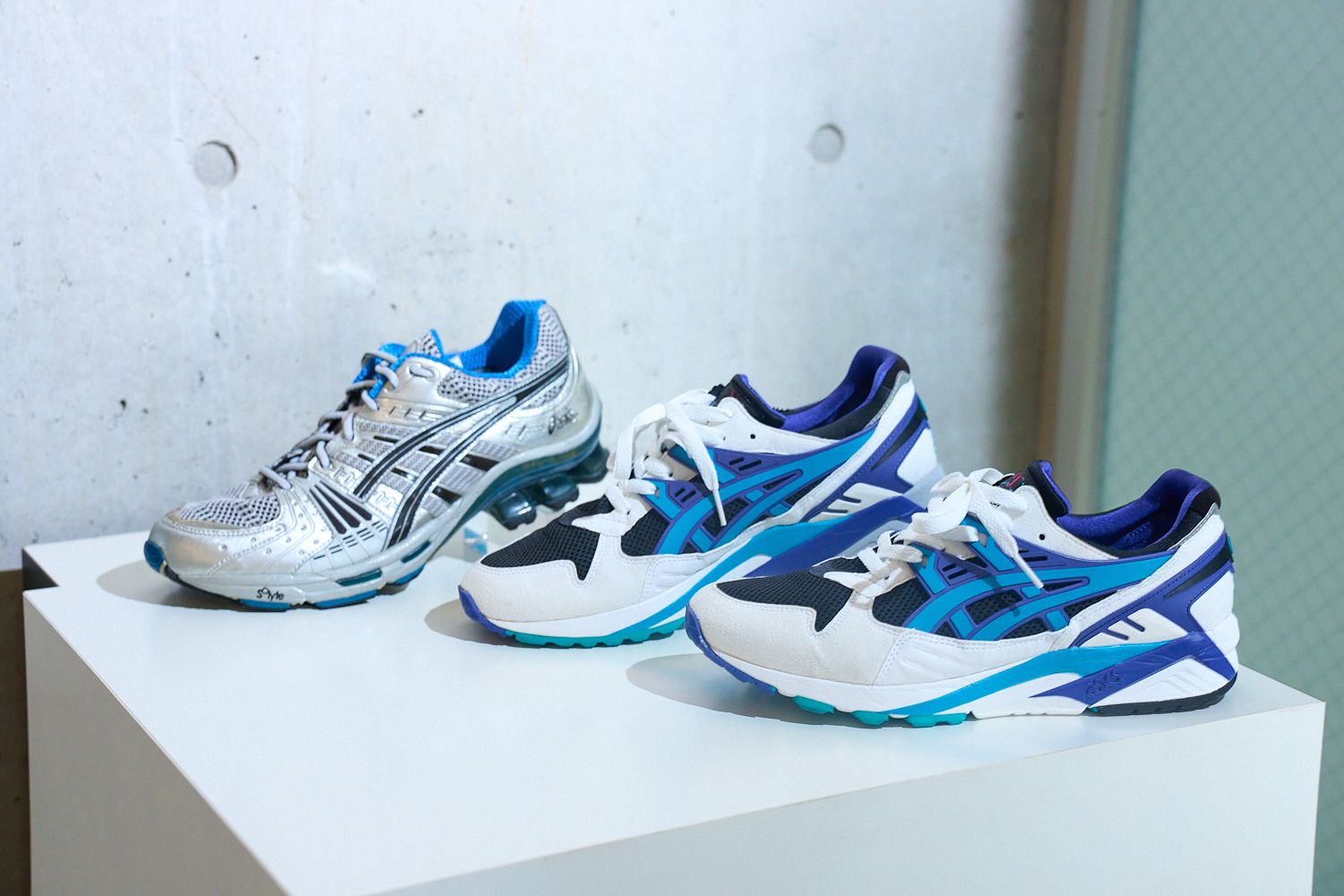

KAYANOS Through the Ages
SA: What did you want to achieve with it?
TK: It’s a good question. You know, it’s a special series because it’s a running shoe, but it was specifically designed for running at slower speeds over long distances. If there was a specific target, it was entry-level runners, originally. They were also considering a few things that were going on in the industry at the time. There was a big trend of having sport shoes that could be used in various sports, like cross-training. ASICS had really good running shoes at the time, but we didn’t have any shoes that were stylish. I wanted to make something that could be used for a variety of sports but also be stylish. And that’s when I was inspired by the stag beetle.
SA: Why the stag beetle?
TK: When I thought about what the silhouette could be, the keywords were agility, durability, and a wide range of motion while people train in the gym. I then tried to find a concept that would bring all of these together and I felt like the stag beetle was the perfect embodiment of all of these things. I took that as the inspiration for the shoe and thought that it would be a great way to engage in creative storytelling, too. I utilized the stag beetle’s features in the design for the first shoe but the inspiration for the second was a praying mantis and a Lamborghini was inspiration for the third. Then I took inspiration from a caterpillar, human organs, Japanese armor, Western armor, and guitars.
The series is really about balance. It’s a marriage between how the shoe looks and how it functions. Nobody at ASICS was really thinking in this way back then, so that balance has been tricky to manage at times.
SA: How so?
TK: Functionality is very quantitative, right? So, if you design a shoe like this, it will help a person do a specific thing, like run. There’s something very mathematical and straightforward about it—like, one plus one equals two. But if you add an element of fashion—or if you at least care about how the design looks—and also add emotion and inspiration from other aspects of life, then you can go much further. I wanted to make something unique, that looked unique, but enhanced the functionality of the shoe, too.
SA: Are they still designed for entry level runners? They seem like they’ve shifted their focus.
TK: Yes, they have. There’s been a really big shift both in the functionality and the target user of the shoe. The 90’s were a time when sports and fashion were starting to be mixed together in sneakers, and so the first generation capitalized on that trend. That’s why the first generation was called the GEL-KAYANO TRAINER. It was for people who wanted to look stylish but still wanted something comfortable. But then at the turn of the century, there was a shift towards performance running shoes for athletes. In 2000, we started to integrate ISS technology into the sixth generation for better functionality. Then, in 2012, there was a big shift to becoming more sustainable and environmentally-conscious. But, to be honest, I like the earlier generations more. I think they look cooler.
SA: Have you ever outright rejected some of the research from ISS for aesthetic reasons?
TK: I don’t think there’s ever been an outright rejection, no.
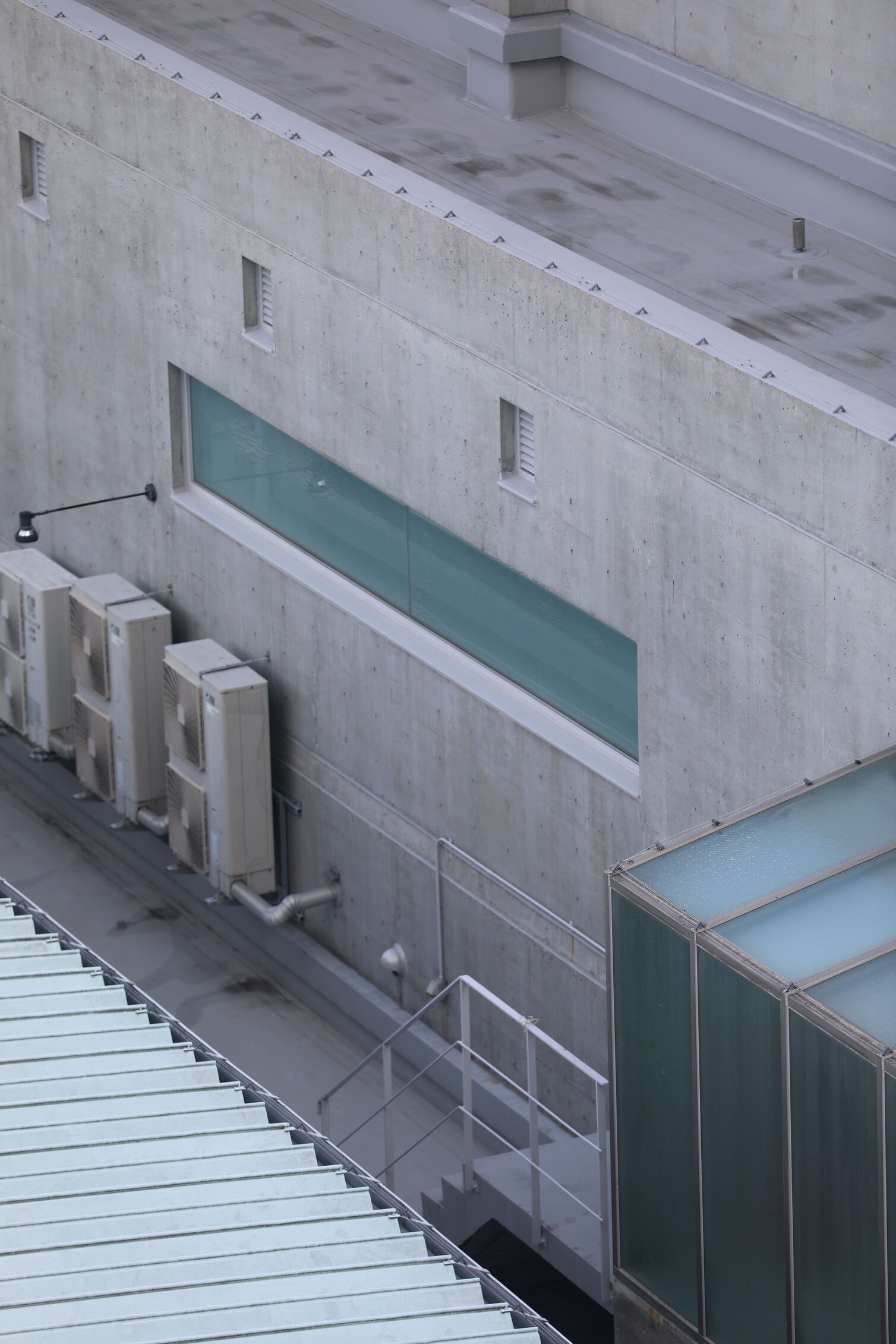
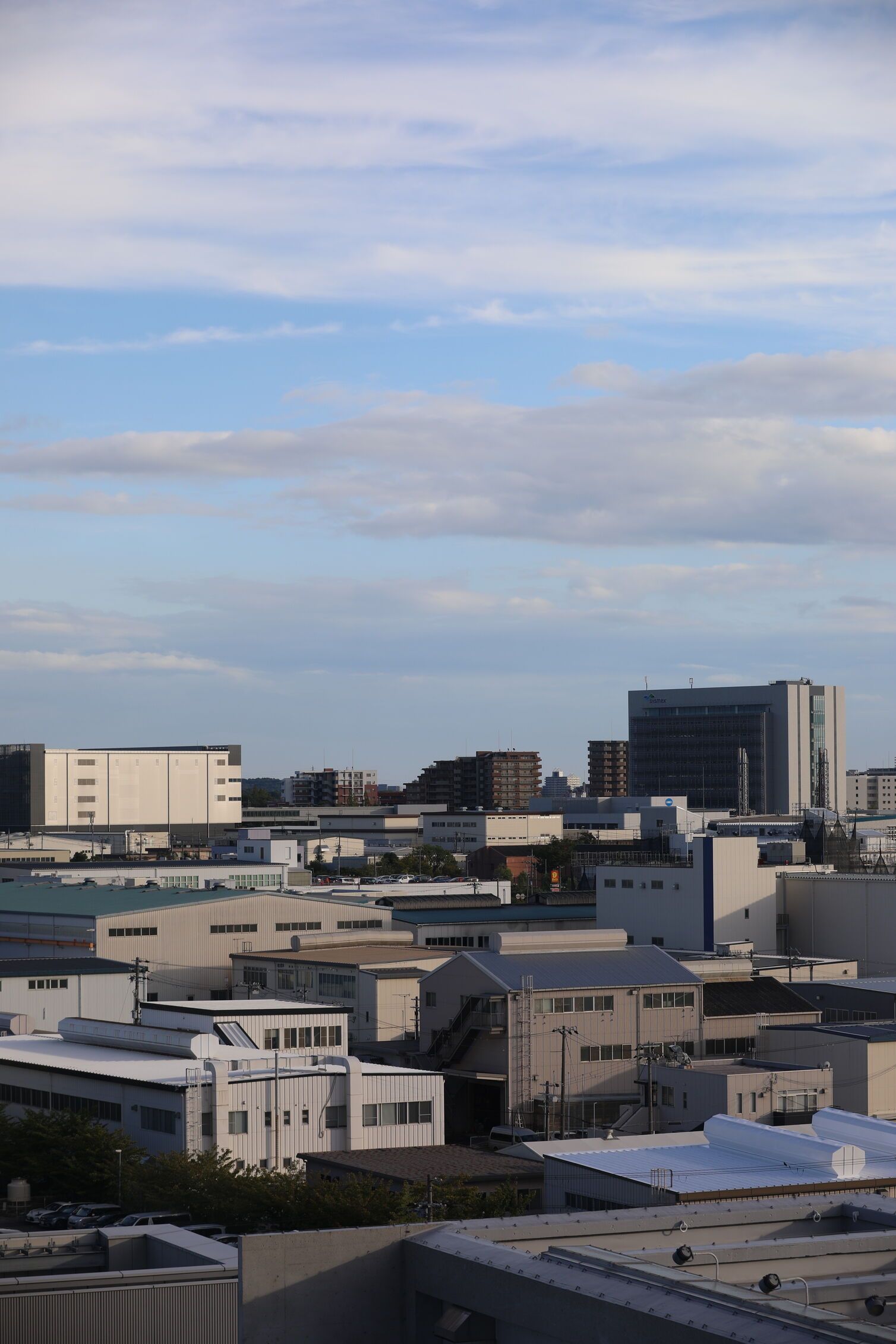
ISS and View from it. Photos: James Oliver
SA: We’re speaking through a translator and one of the words you keep saying while speaking Japanese is the English word “emotion.” Maybe this is a semantic loan or a faux ami, but in any case, what kind of emotions do sneakers elicit for you?
TK: When I talk about emotion, I’m more talking about the aesthetic sense that something gives. It’s about integrating the things I as a designer am inspired by. I have long emphasized the importance of creativity. I see design as a communication tool to convey what makes us unique.
SA: A lot of performance shoes are almost like really padded socks—minimal uppers and very cushioned soles. If I look at the first generation and much later generations, they feel like wildly different shoes. What direction is the future of shoes heading in?
TK: I don’t know. But my best guess is that the trend will keep heading in this direction. This is because companies really need to think about the environment, sustainability, and CO2 emissions. They need to be environmentally friendly and cost-efficient. These then lend themselves to simpler designs. But in my opinion, we should be making things that are more interesting. To be honest, I’m not satisfied right now. I haven’t found the answer but what I can do is pass on wisdom to the younger generation. You know, it’s important to adapt to digital society but I think it’s important to use analog methods, even if it’s inefficient.
SA: Do you still design shoes?
TK: I designed shoes for over 20 years, but I don’t do it anymore. I stopped in 2008 and then became involved with design strategy until 2015. I like to joke that this was right when the boom for sustainability came in. I was very lucky to not have to deal with that. I’m joking, of course.
[Laughter]
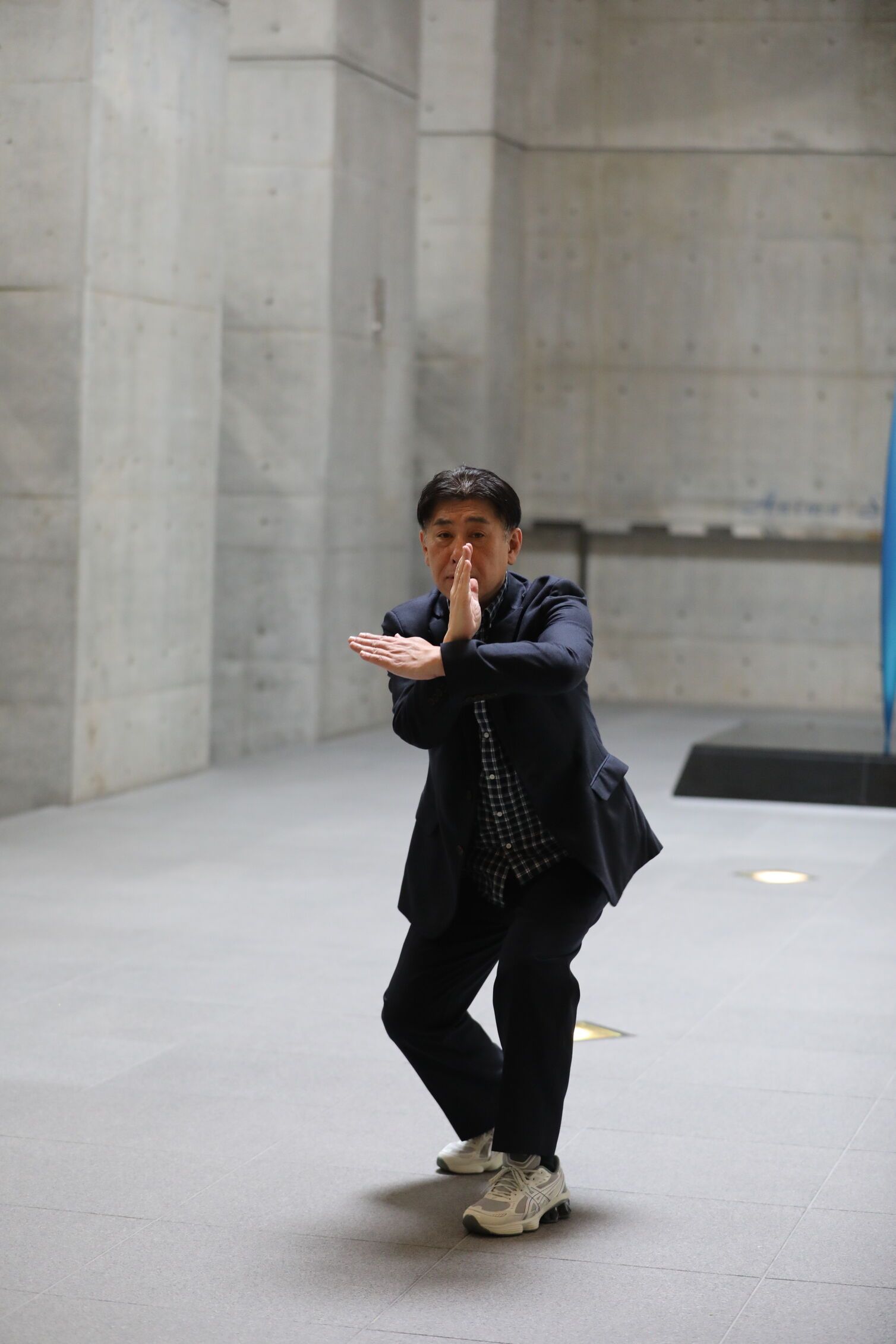
Photo: James Oliver
SA: What do you do now?
TK: Now I belong to the ASICS Archive Team. I contribute my design DNA and experience to the younger generation.
SA: What does good design mean to you?
TK: It’s about accessibility, functionality, emotion, and aesthetics. But all of this comes through the designer’s sensibility and wisdom. Another aspect of good design is value.
SA: Are you interested in design in general?
TK: I am and this was especially important to me between 2012 and 2015. I would often meet with design experts in other industries, such as cars and cosmetics, and exchange opinions and information, discussing how product design was changing in those respective industries. But I’m not really doing that anymore.
SA: Do you collect at all?
TK: No. I don’t collect anything. I don’t even have my own line at home. But that’s fine. They’re all archived at ASICS. As soon as I make something and put it into the world, it’s old. I’ve already let it go. I want to move on to the next thing.
Credits
- Text: Shane Anderson